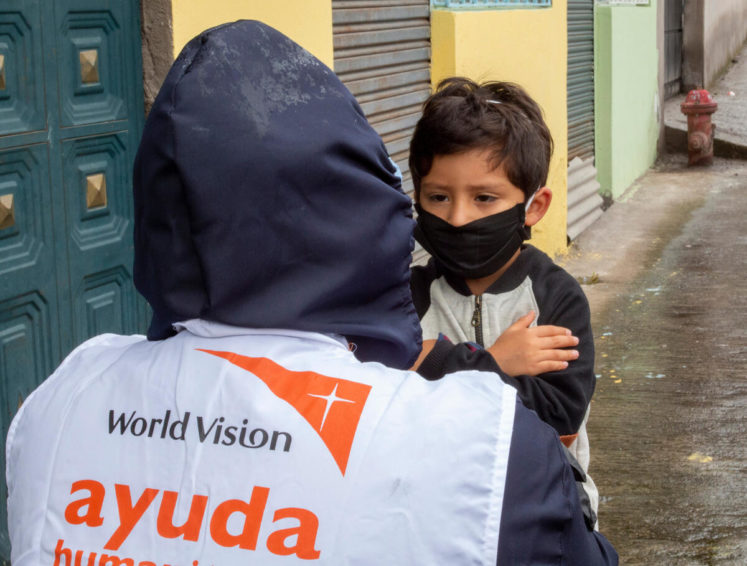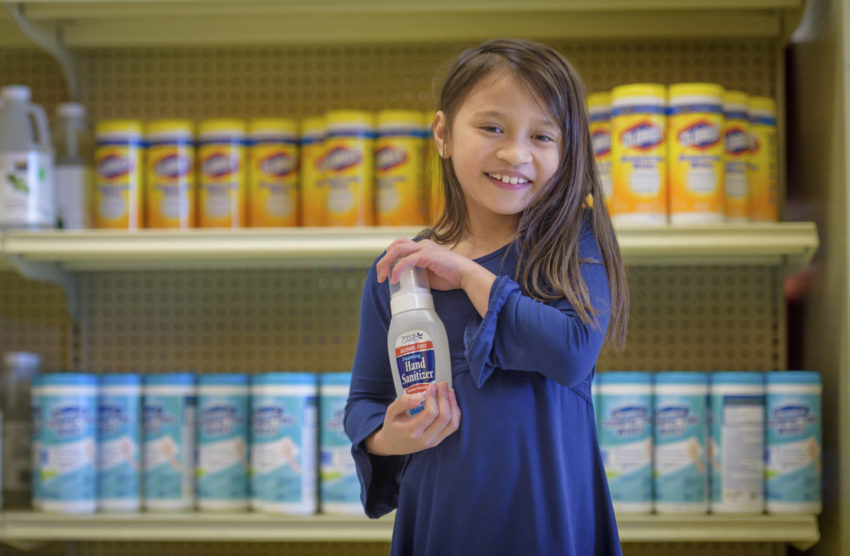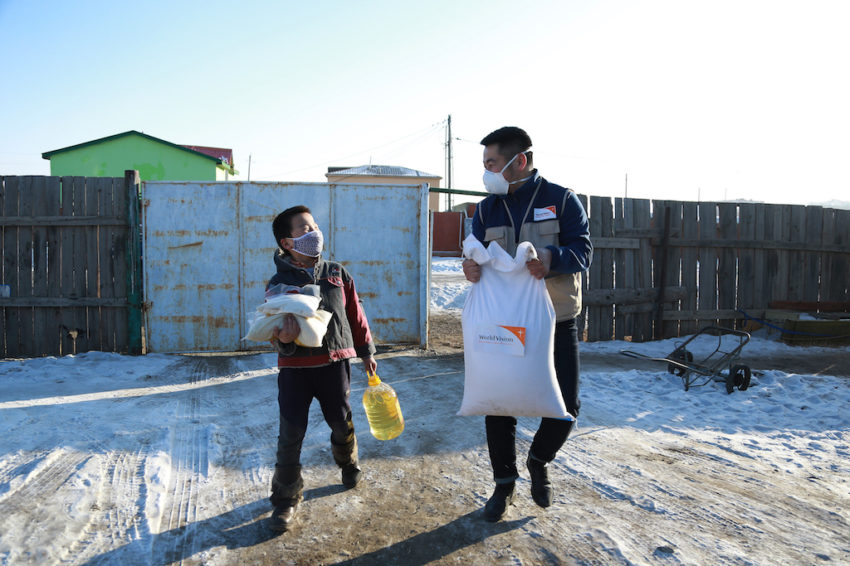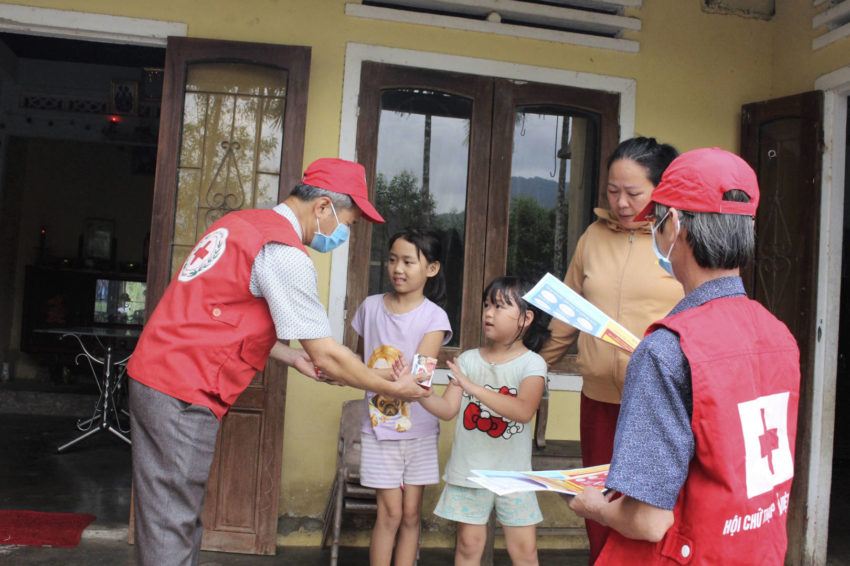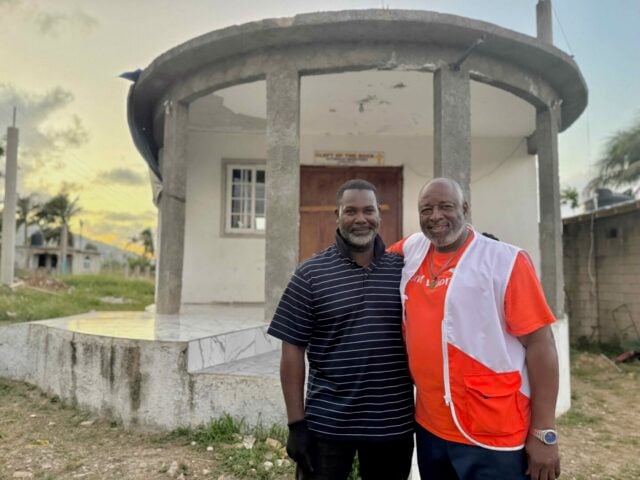One year in, the COVID-19 pandemic has affected children and their families around the world. Parents, family members, and other trusted adults play an important role in helping children understand the ongoing pandemic and make sense of it in a way that minimizes fear.
Experts agree that parents should shield children from watching disturbing live news coverage. But how do you talk with kids about the coronavirus? How do you talk about something difficult they’ve seen or heard in the news? How do you prepare them for what they might hear while talking with their friends? And how do you talk to them about how it’s directly impacting their everyday lives?
The World Vision media and communications staff have experience researching and covering disasters and their effects on children. The team also includes parents and people who care about children. After all, that’s why we do the work we do.
Here are our team’s best tips for how to talk to kids about the coronavirus.
Tip #1: Find out what they already know.
Start with exploring what they’ve seen or heard already with: “What are you hearing about the coronavirus?” Then, follow up with open-ended questions: “How do you feel about it?” or “What questions do you have?” You may find out that your child knows more than you think or that they’ve heard or imagined something inaccurately. This gives you a chance to learn what they know and to provide guidance with accurate information.
Tip #2: Explain the coronavirus pandemic at an age-appropriate level.
Use words and examples they’ll understand to explain the coronavirus and COVID-19. Keep it simple and don’t over-share. You don’t need all the answers. If you’re not sure why something happened, it’s okay to say you don’t know. If you’re worried about the coronavirus or how your family is affected, discuss your fears and thoughts with another grown-up, not with a child. You could also teach your child Psalm 23:4, “Even though I walk through the darkest valley, I will fear no evil, for you are with me” (NIV).
Tip #3: Help your child feel safe.
Reassure, give extra hugs, and show your kids how you’re helping to keep your family safe from the coronavirus pandemic — washing your hands, wearing a face mask in public, cleaning more frequently, and having emergency supplies. You can also share how they can help keep their friends safe by keeping their distance when they play outside.
This is also a great time to pray together, give fears to God, and ask for comfort and protection.
Tip #4: Draw it out.
Offer crayons and paper. Some children may not want to talk about something scary they’re thinking about, but it might be easier for them to draw about it. Children’s counselors frequently use this technique, which we also find helpful at the Child-Friendly Spaces we set up after disasters.
Tip #5: Give them a way to help.
Mister Rogers talked on his show about how his mother told him to “Look for the helpers. You can always find people helping.” Children may be reassured to see emergency aid workers and good Samaritans helping people in need.
Learn what World Vision is doing to respond to the coronavirus pandemic in the video below, where World Vision child protection expert Bill Forbes also offers insights on how to create a meaningful experience for children during the COVID-19 pandemic and what the world’s vulnerable children are facing because of the virus.
You can model generosity and be a good Samaritan too. Invite your children to do something to help people affected by the coronavirus pandemic. It could be as simple as saying a prayer together, asking God to comfort all of us. Or they could donate some allowance money or fundraise.
Another resource for how to talk to kids about the coronavirus:
Want to read more on how to talk to kids about the coronavirus pandemic? The U.S. Centers for Disease Control has released messages for use by parents, school staff, and others working with children.
